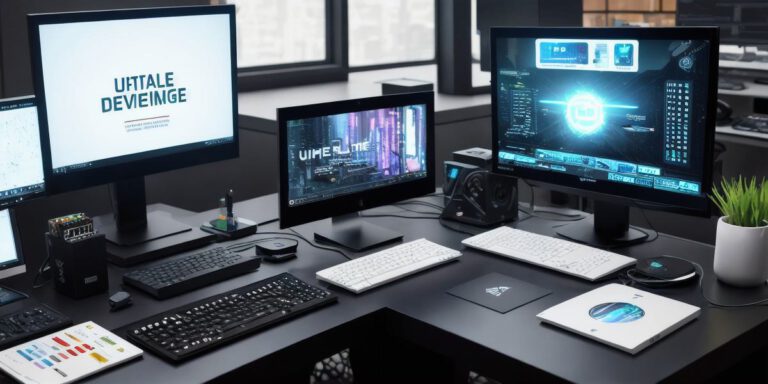Unleash Your Creativity: How to Use Unreal Engine as a Solo Developer

As a solo developer, you may feel limited by your resources and capabilities when it comes to creating immersive 3D environments. However, with the power of Unreal Engine, you can unleash your creativity and bring your ideas to life. In this article, we’ll explore how you can use Unreal Engine as a solo developer to create stunning visual effects, interactive applications, and more.
What is Unreal Engine?
Unreal Engine is a powerful game engine that has been used in the creation of some of the most successful games and virtual reality experiences in recent years. It’s also a popular tool for creating 3D content for use in interactive applications, advertising, and more. The key advantage of Unreal Engine is its flexibility and scalability, which make it ideal for solo developers who want to create complex projects with limited resources.
Getting Started with Unreal Engine
The first step to using Unreal Engine as a solo developer is to download the software from the Epic Games Store. You’ll need an account and a computer that meets the system requirements for the latest version of the engine. Once you have the software installed, you can start by creating a new project and setting up your environment.
One of the most useful features of Unreal Engine is its blueprint-based visual scripting system. This allows you to create complex interactions between objects in your scene without writing any code. You can drag and drop nodes onto your canvas, connect them with cables, and use visual logic to create your desired effect.
Creating Visual Effects
With Unreal Engine, you have access to a wide range of tools for creating stunning visual effects. For example, you can use particle systems to create explosions, smoke, and other special effects. You can also use post-processing effects to add depth of field, color correction, and other enhancements to your scene.
Another powerful tool in Unreal Engine is the physics simulation system. This allows you to create realistic interactions between objects in your scene, such as gravity, collisions, and rigidbody dynamics. You can use this system to create everything from simple interactive objects to complex simulations of physics-based environments.
Building Interactive Applications
Unreal Engine is also a popular tool for building interactive applications. With its support for VR and AR technologies, you can create immersive experiences that engage users in new and exciting ways. You can also use Unreal Engine to build web-based applications that run in the browser, without the need for any additional software or plugins.
One of the key advantages of using Unreal Engine for interactive application development is its support for blueprints. This allows you to create complex interactions between objects in your scene without writing any code. You can also use the physics simulation system to create realistic interactions between objects, and add animation and other visual effects to make your application stand out.
Summary
In conclusion, Unreal Engine is a powerful tool for solo developers who want to unleash their creativity and bring their ideas to life. With its flexible and scalable architecture, you can use the engine to create stunning visual effects, interactive applications, and more. Whether you’re a beginner or an experienced developer, there’s something for everyone in Unreal Engine. So why not give it a try today?
FAQs
- What is the minimum system requirements for running Unreal Engine?
Unreal Engine requires at least a dual-core processor with 2GB of RAM and a dedicated graphics card with 512MB of memory. You’ll also need a computer that runs Windows 7 or later.
- Is there a free version of Unreal Engine available for solo developers?
Yes, Unreal Engine has a free version called Unreal Editor Lite, which is designed for beginners and hobbyists. The free version includes most of the features








